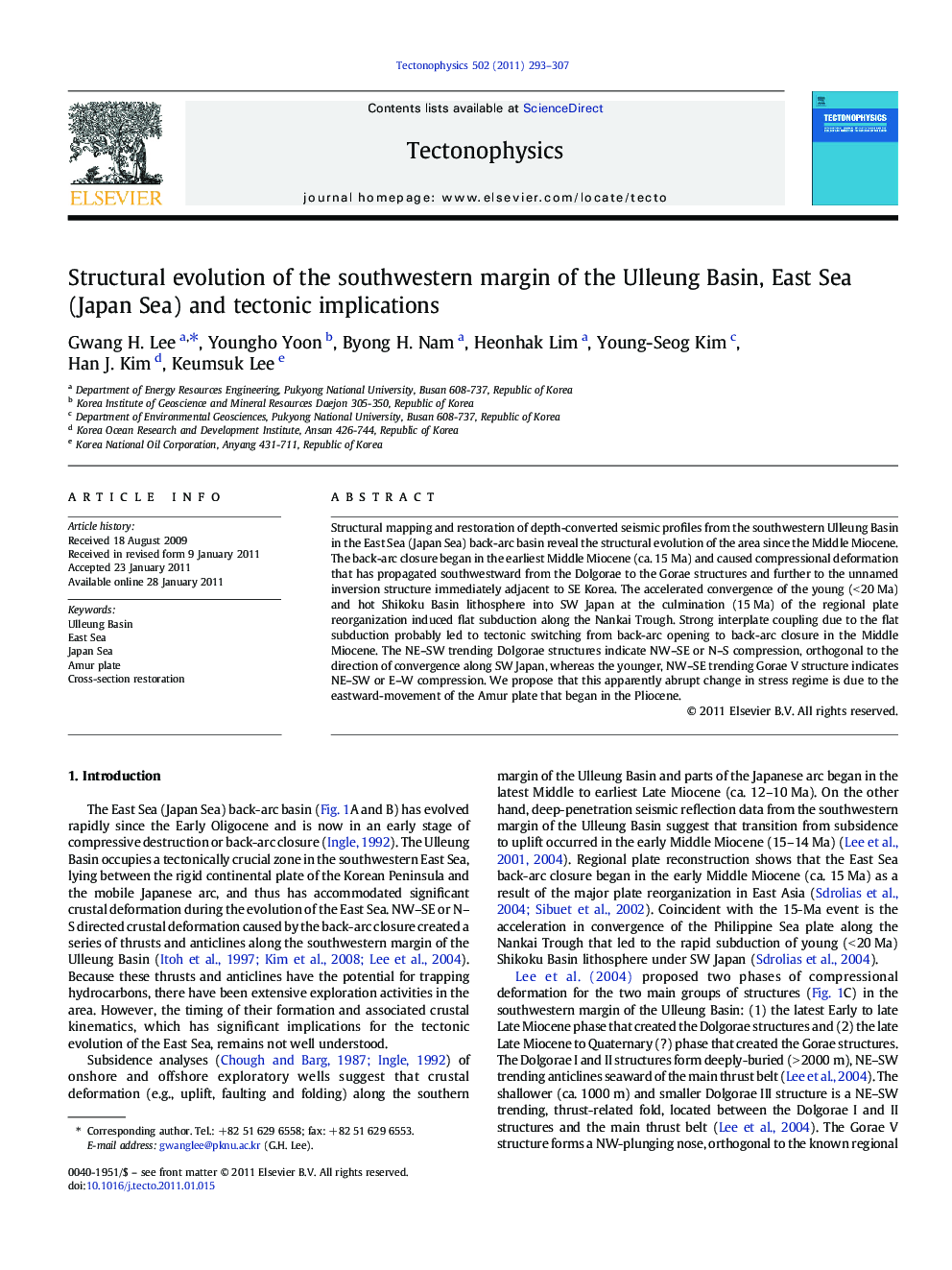| Article ID | Journal | Published Year | Pages | File Type |
|---|---|---|---|---|
| 4693125 | Tectonophysics | 2011 | 15 Pages |
Structural mapping and restoration of depth-converted seismic profiles from the southwestern Ulleung Basin in the East Sea (Japan Sea) back-arc basin reveal the structural evolution of the area since the Middle Miocene. The back-arc closure began in the earliest Middle Miocene (ca. 15 Ma) and caused compressional deformation that has propagated southwestward from the Dolgorae to the Gorae structures and further to the unnamed inversion structure immediately adjacent to SE Korea. The accelerated convergence of the young (< 20 Ma) and hot Shikoku Basin lithosphere into SW Japan at the culmination (15 Ma) of the regional plate reorganization induced flat subduction along the Nankai Trough. Strong interplate coupling due to the flat subduction probably led to tectonic switching from back-arc opening to back-arc closure in the Middle Miocene. The NE–SW trending Dolgorae structures indicate NW–SE or N–S compression, orthogonal to the direction of convergence along SW Japan, whereas the younger, NW–SE trending Gorae V structure indicates NE–SW or E–W compression. We propose that this apparently abrupt change in stress regime is due to the eastward-movement of the Amur plate that began in the Pliocene.
Research Highlights► Interplate coupling by subduction of young Shikoku Basin caused back-arc closure. ► Back-arc closure propagated southwestward and suggests change in stress regime. ► Change in stress regime in Pliocene may be due to movement of Amur plate.
